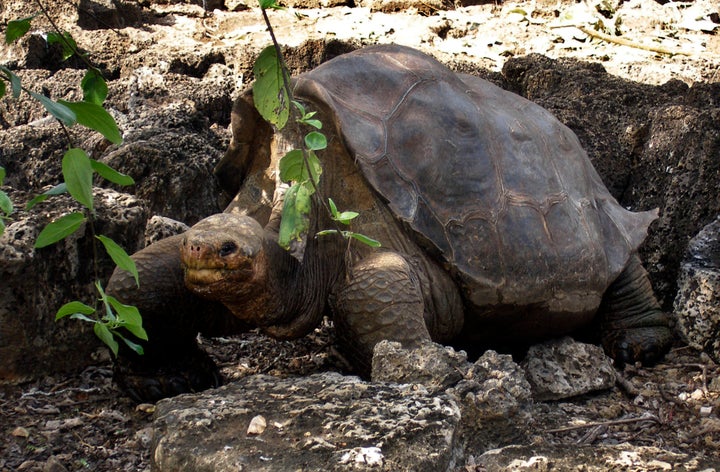
You may have heard of George, the giant tortoise. I was really rooting for him. When he was discovered in the seventies on the Galapagos Island of Pinta, he was quickly named the last of his subspecies (Chelonoidis nigra abingdoni). Talk about the pressure this cat, er, tortoise was under. Everyone everywhere wanted him to reproduce, and they wanted him to reproduce bad. His entire species was depending on it.
When I think about George, I can't help but compare it to the people that I know that suffer through the perils of infertility. I have so many friends that really want children, but it just doesn't come easy and sometimes not at all. A great many of them cite a biological urge to pass on their DNA, their trademark dimple and lopsided family smile. Here's the thing: It doesn't always work that way. Sometimes medical science can intervene (I can't help but think of the first test tube Mom, Lesley Brown, who died recently) and amazing things happen with the help of science. But sometimes, no amount of innovative technology can help the reproduction cause.
George was put in some digs with a female tortoise from the Wolf Volcano, which wasn't too far away. He did end up mating, fifteen years later to be exact, but the eggs were infertile. It was absolutely heartbreaking and stressful. Here they were, two tortoises thrown together for the purpose of science with all eyes on them, and they couldn't produce offspring.
A friend of mine, who we can call Fred, said that there was nothing more humiliating than making sperm deposits in a sterile, white office. He was handed a pile of nudie magazines and the whole thing felt weird and unnatural. I asked Fred how he would have felt if people were watching him. "You have got to be kidding!"
George's handlers in the Galapagos tried again. They put female tortoises from Espanola Island, found to be an even closer genetic match than the Wolfess. Alas... this, too, was not meant to be. He failed to mate with any of them.
Here's the thing. George was found to be in his mating prime. (http://news.bbc.co.uk/today/hi/today/newsid_8164000/8164543.stm) Sometimes no matter how much science and resources we have at our disposal, it just isn't enough.
Now George is in the news again. Lonesome George, as he is called, has died. The big deal is that he has failed to reproduce. Here's the thing. I get that it is tragic that he was the sole surviving Pinta Island Tortoise, but maybe he wasn't so lonesome after all. That would be implying that he really lived an isolated life. But he was surrounded by tortoises from many different regions. Just because they didn't share the same genetic makeup, they spent years together, nonetheless.
My friend, Fred, ended up the proud father of a beautiful baby girl. But it took three IVF cycles. He and his wife had seen every specialist. They vowed that there wouldn't be a fourth. They started looking into adoption. A family member was adopted in the eighties, back before it was socially acceptable (there wasn't Angelina Jolie and Katherine Heigl in weekly magazines) and he looked so much like my aunt in infancy it was frightening. He fit into the family seamlessly. He is no less a member of the family than his brother, who shares his mother's and father's genetic makeup.
So, let's mourn poor George. He lived a good and long life. But he wasn't alone. Last of a kind, surely -- but surrounded by friends and family, nonetheless.